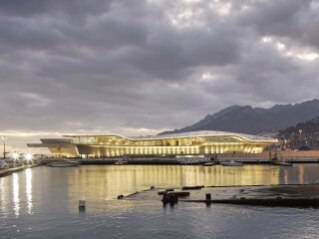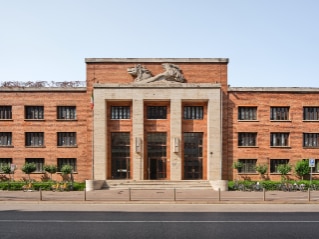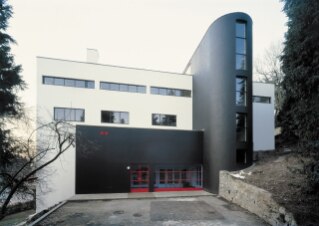As a long-time resident of New York, Vergara photographed the World Trade Center from its construction in the late 1960s, throughout its entire lifespan even beyond its demise, into the site's long reconstruction phase. Seen from locations as far away as the Bronx and Newark, New Jersey, the towers in his images occupied their own distinctive spot on the skyline, usually as instantly recognizable features on the far horizon beyond a neighborhood in the foreground or the street-level activities of local residents. This forty-year chronicle of the rise, fall, and regeneration of the Trade Center site is currently the subject of a retrospective at the Museum of the City of New York until early December.
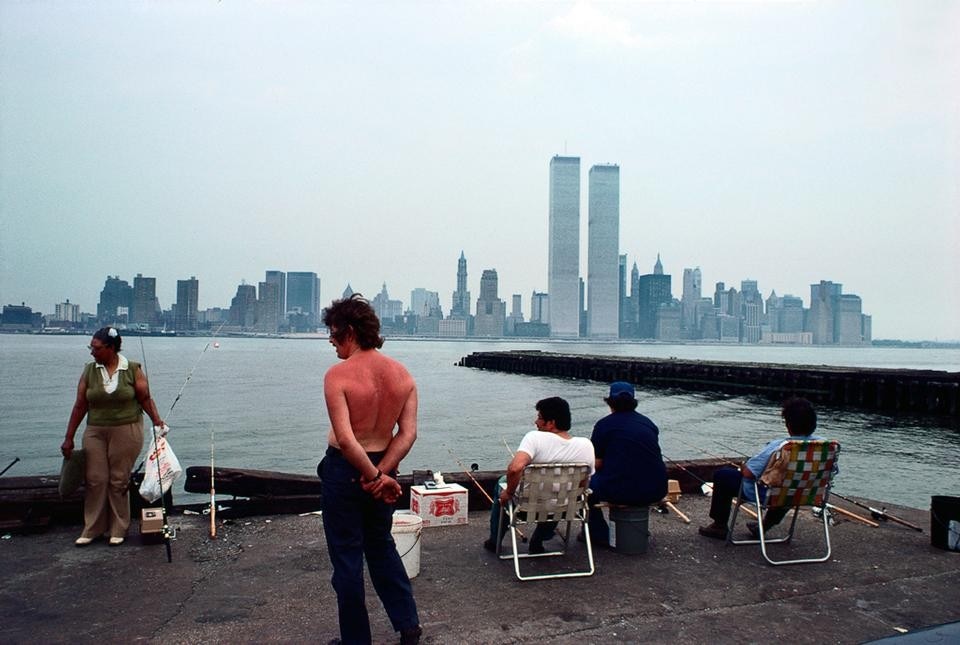
Above: View of Lower Manhattan from Exchange Place, Jersey City, New Jersey, 1977.
Camilo José Vergara: When I started photographing the World Trade Center construction in 1970, I was a recent arrival from the provincial town of Rengo in Chile whose modest number of inhabitants could have easily fitted inside just one of the towers. I was immediately attracted to the towers because they were so very big and very American. As they rose to become the tallest buildings in the world, even as the Vietnam War was still raging, I regarded them as a wild expression of hubris, arrogance and mistaken priorities, a point I emphasized by photographing them with homeless people in the foreground or in the harsh sunlight, which turned them into blades of shinning steel.
Their shape was so rational. Seen within the immediate context, going up their full height made their contrast with everything else extremely strong. You couldn't help but watch what was going on there. But it's interesting when you think of it—the big name photographers of the time didn't record the buildings. Danny Lyon did the neighborhood, Joel Meyerowitz did the famous site visits. But the towers themselves are seen surprisingly little. Walker Evans was alive when they were being built—where is Walker Evans's picture of the Trade Center?
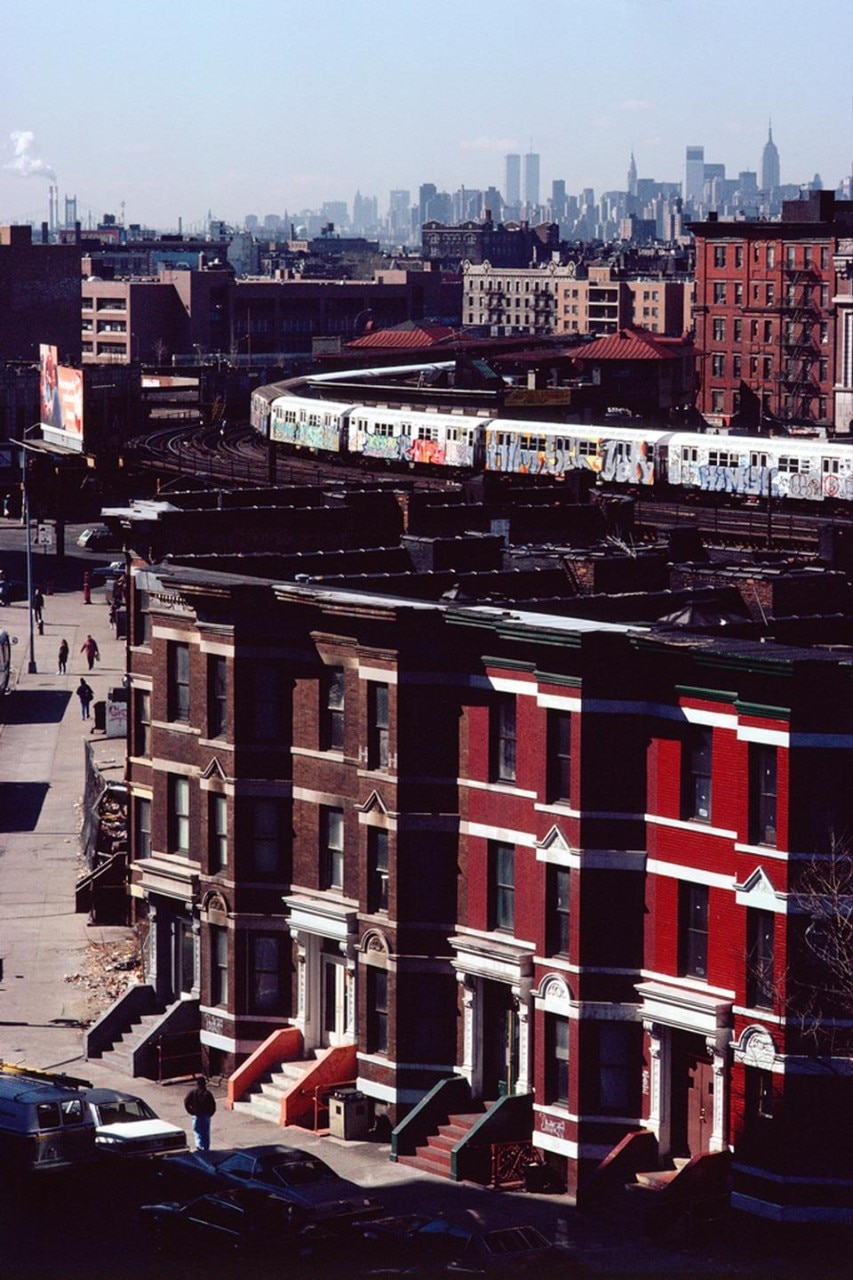
Photographing the urban environment is what I do, but also you have to tell the history of places. Each new generation wants to know what these places mean, and images play a very important role in telling this history. There's no pay in photographing for history. You end up in history museums. The question becomes, What images do you produce to make a place understandable for the following generations that want to know about it?
At 30 stories high, they would have been curiosities; they would have disappeared into the cityscape. But they were the tallest buildings anywhere at the time. Now this is happening all over the world, each new tallest building in the world is being eclipsed. As I moved further away from these behemoths to photograph them from the distant boroughs, they seemed to lose their solidity and become mysterious, alluring and fantastic shapes that hovered in the skyline over otherwise ordinary neighborhoods. I regularly photographed the Twin Towers from places such as the wildlife refuge in Jamaica Bay, Queens and from struggling neighborhoods in the Bronx. I liked to see them in the background of my photos rising above the waterways, vegetation, junkyards, expressways, subways and ordinary houses that were in the foreground and my primary interest.
The very fact of 9/11 dictated the future of the place. The way it's being rebuilt now—the ambition, the scale—was directed by the event.
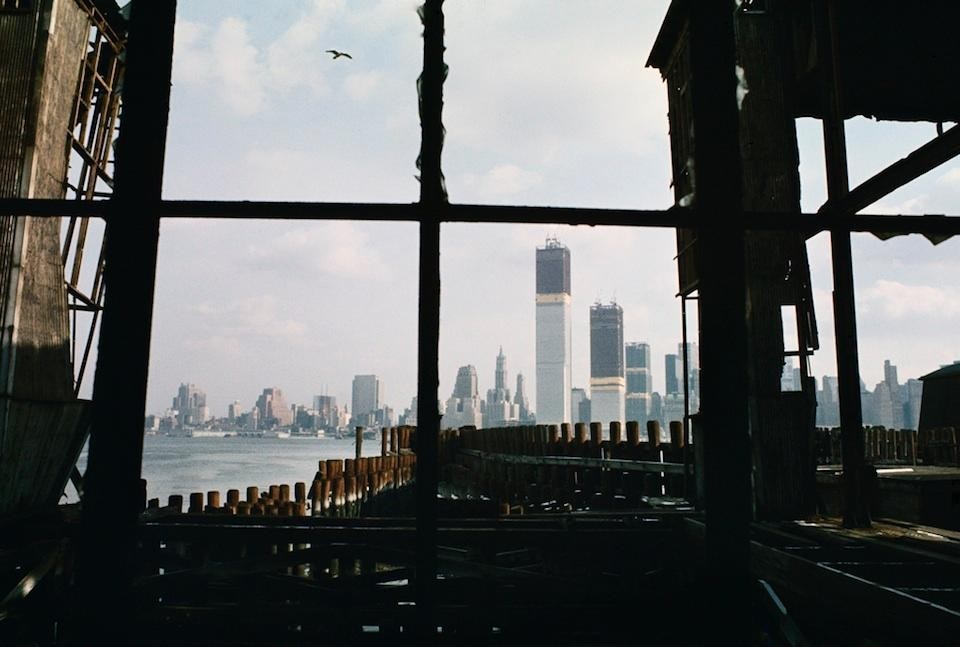
The towers changed in appearance depending on distance, weather, light conditions and whatever was in the foreground. The foreground was always a strong element in they way I approached these photos—with housing and other hard surfaces that you didn't have with skyline in the distance. There was something bureaucratic about them. But from a distance they seemed like places of fantasy and the imagination. That's an old story of the city, tawdry neighborhoods and tenements up close and the gleaming towers of commerce in the distance.
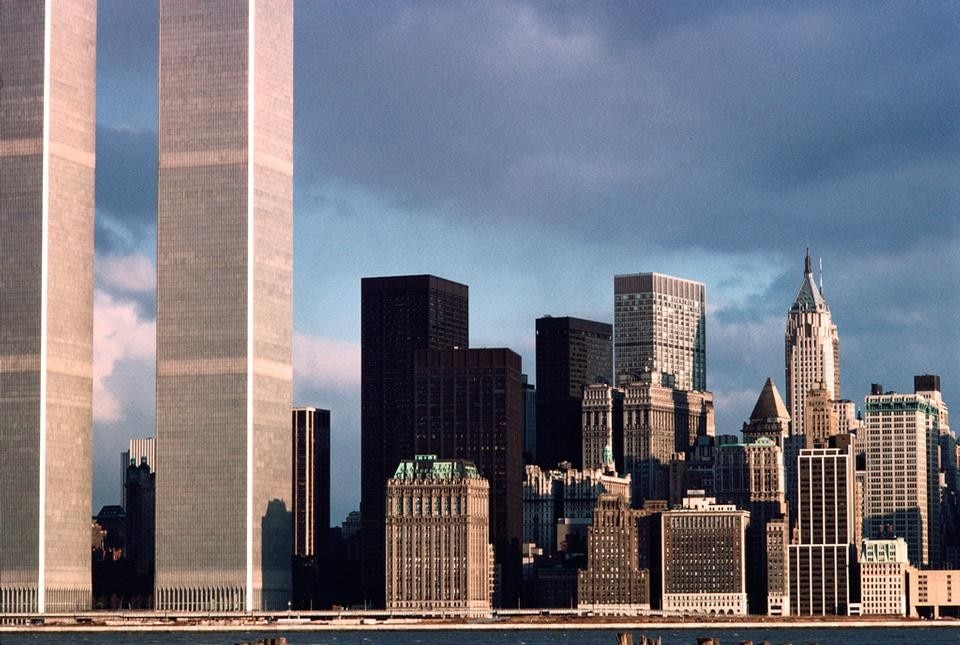
The towers were actually getting obscured as more buildings went up in front of them. A new story was being told in the foreground—with the towers going down, the skyline was redefined again. So the change happened at both levels: in the far distance and in the foreground. So then the city becomes a dialogue, between the neighborhoods in the foreground the skyline in the far distance.
The gradual change all around the city has surprised me actually; you knew they would rebuild the Trade Center, that's where the priorities and money goes—but over time areas like Brownsville and South Bronx have also been rebuilt in a kind of humble way. What's really striking is how much stuff has been going on with the waterfront—in Brooklyn and even Jersey there all new developments for the middle class. In Brooklyn on both sides of the bridges there are now beautiful parks. People get their wedding pictures taken where the old junkyards were. I don't know about for others, but in doing this process I changed my view of the city.
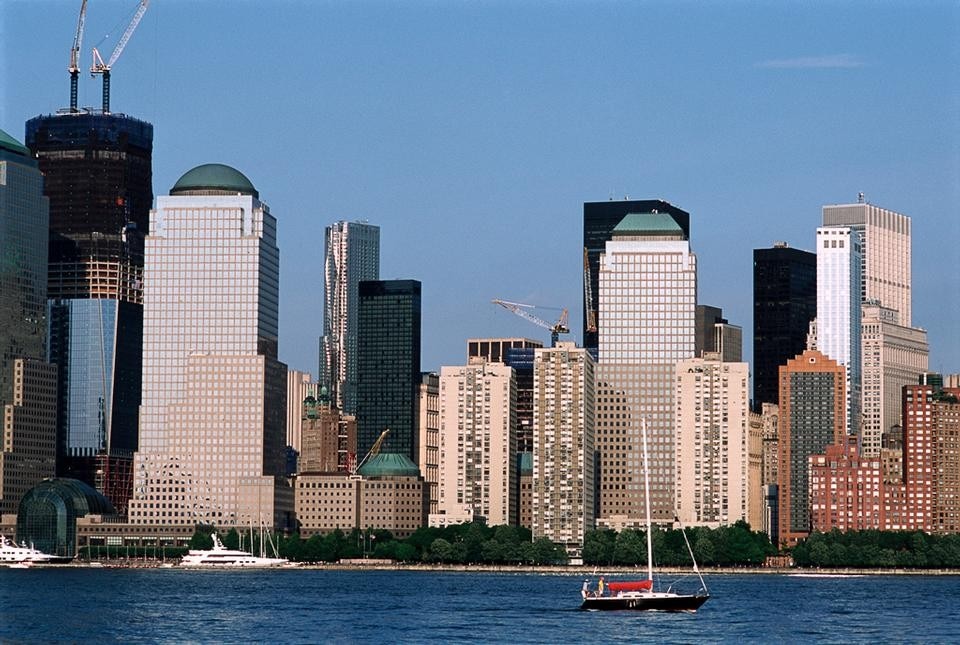
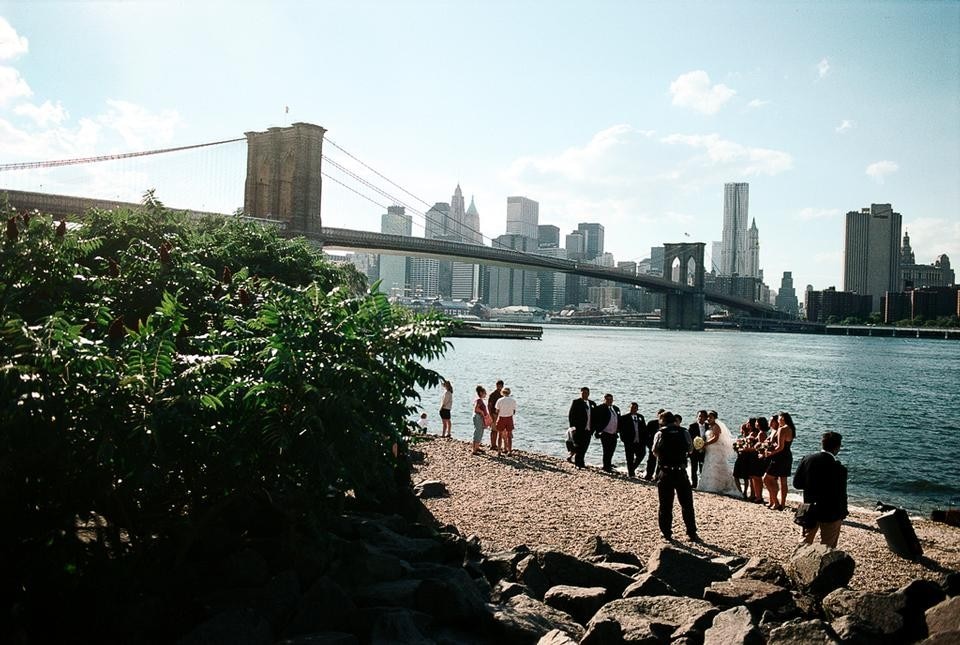
It's true that most people said they were ambivalent. People did not love the towers, but they would instantly recognize them—you always knew where you were in relation to them. Crossing the bridge, you could see them—in 2001 after the fall, you could see people constantly looking at the void. Certainly I kept seeing them, after all the images I took of them. When I closed my eyes at night I could see the towers. Whether it's nostalgia or not, people live with something long enough and then they disappear they have a certain effect on them.
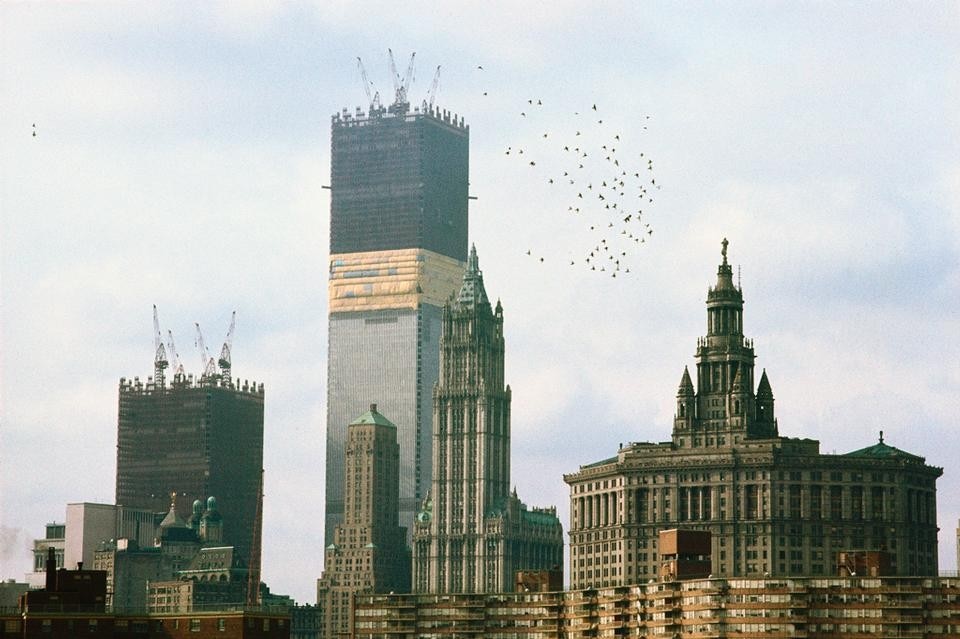
The very fact of 9/11 dictated the future of the place. The way it's being rebuilt now—the ambition, the scale—was directed by the event.
I find the new building personally unsettling. Maybe as a complex of five buildings, I would like it better, but it is hard for me to think that it will move into the realm of fantasy like the World Trade Center did. So far it seems to me an extremely unfriendly structure. Contrast it with the Gehry building [80 Spruce Street], where the light plays with it and it shines; there you have a piece of arch that gets a smile out of you. This motherfucker doesn't!
On view through December 4, 2011
Museum of the City of New York
1220 Fifth Avenue, New York


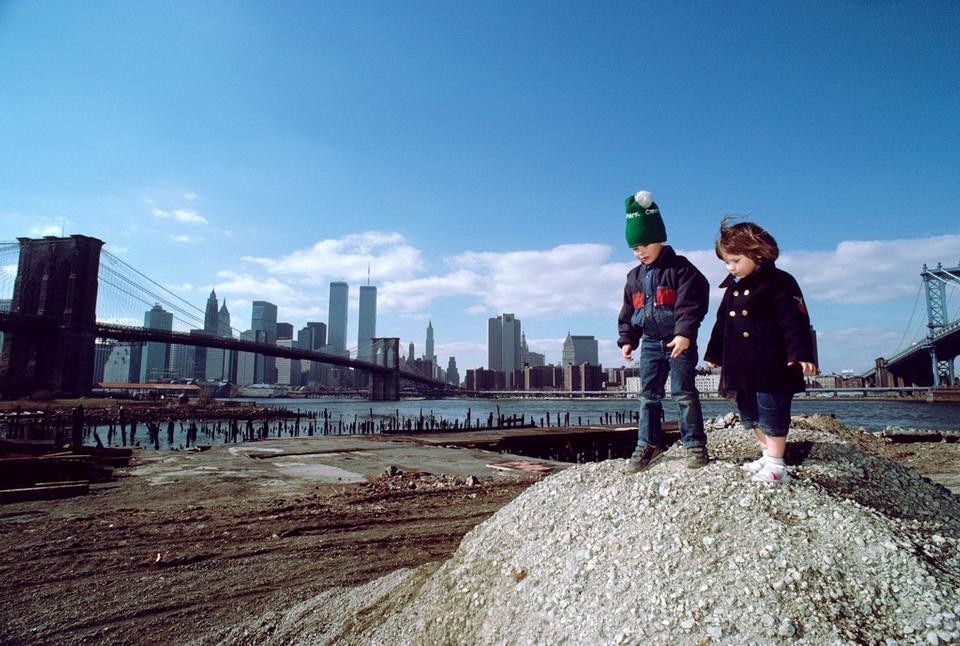


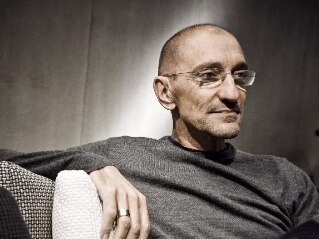
.jpg.foto.tbig.jpg)




